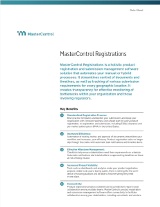510(k) Guidance
The Food and Drug Administration's (FDA) 510(k) Guidance document outlines the steps medical device companies follow to bring a product to market. MasterControl will increase your chances for success. Ensure all materials and tasks for every market are complete, compliant and on time.








